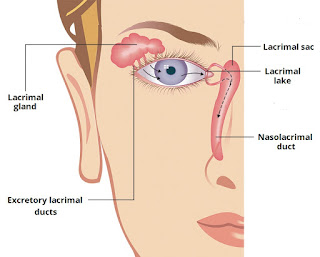"The fact of tears not being shed at a very early age from pain or any mental emotion is remarkable, as, later in life, no expression is more general or more strongly marked than weeping." pg 154 EEMA Charles Darwin.
Sarah discussed Duchenne's original photograph that Darwin showed people to see if they could recognize the emotion based upon the stimulation of specific facial muscles. In the 3rd Edition of the book, Ekman includes the original photograph that was not actually in the earlier editions of the book.

James discussed his amazement on where in his body tears are made, and where they go ultimately. The lacrimal glands reside above the eye and the tear duct, where James erroneously thought tears came from, is the location where tears drain into the back of your throat.

We relied on a number of original research papers to help us understand the topic. Some of the papers we cited can be found here:
Becht, Marleen C., and Ad JJM Vingerhoets. "Crying and mood change: A cross-cultural study." Cognition & Emotion 16.1 (2002): 87-101.
Gračanin, Asmir, Lauren M. Bylsma, and Ad JJM Vingerhoets. "Why only humans shed emotional tears." Human Nature 29.2 (2018): 104-133.
Oriá, Arianne P., et al. "Comparison of Electrolyte Composition and Crystallization Patterns in Bird and Reptile Tears." Frontiers in Veterinary Science 7 (2020): 574.Yong, Min Hooi, and Ted Ruffman. "Emotional contagion: Dogs and humans show a similar physiological response to human infant crying." Behavioural processes 108 (2014): 155-165.
The opening and closing theme to Discovering Darwin is "May" by Jared C. Balogh.
Intermission music "Cryin" by Chris Isaak


Thoroughly enjoyable, as always, and equally informative. I find the idea of an offspring having to "amp up" the crying signal by adding tears in order to manipulate the parent particularly intriguing... It also explains a LOT of incidences I've witnessed over the years. Hoo boy.
ReplyDelete